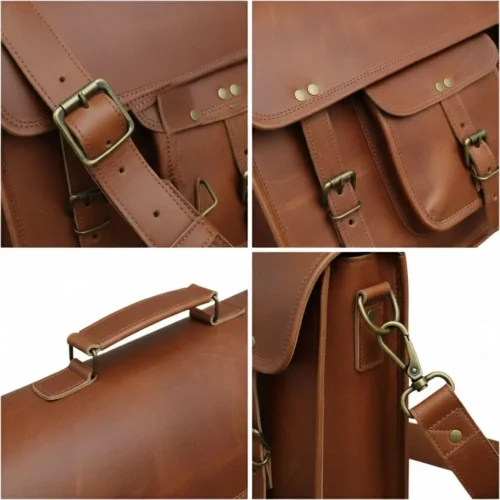
🚛 FREE SHIPPING | LIFETIME REPAIR WARRANTY | 20% Sale: “NEWYEAR20”
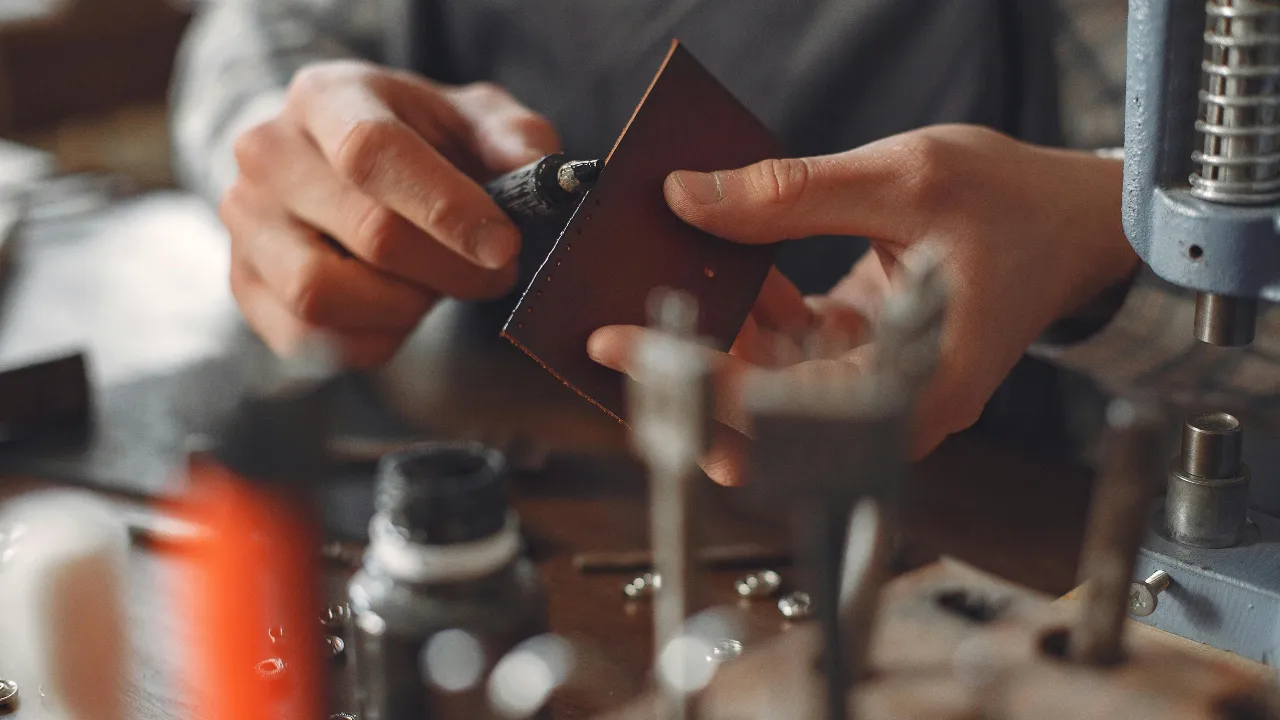
Embarking on the journey of leather embroidery can seem daunting, but with the right approach, it can be a rewarding experience. First, choose the type of leather suitable for embroidery on leather, preferably something soft and pliable. Start by selecting a design and transferring it onto the leather using a water-soluble pen. For machine embroidery on leather, ensure the leather is secured in a hoop and use a leather needle. Adjust the machine’s tension settings accordingly. If you’re venturing into hand embroidery on leather, use a sturdy needle and strong thread, taking care to make even, small stitches. With patience and precision, your hand embroidery leather project will come to life beautifully.
To create stunning leather embroidery, you’ll need specific materials and tools. Start with high-quality leather types suitable for embroidery on leather projects, such as soft calfskin or suede. Ensure you choose real vs fake leather to guarantee durability and authenticity in your work. You’ll also need a variety of needles, including leather and embroidery needles. For machine embroidery on leather, an embroidery machine with adjustable tension settings is essential. Strong, durable embroidery threads and a stabilizer to keep the leather in place are crucial. Scissors designed for cutting leather and a water-soluble pen for transferring designs will aid in precision. Whether you’re planning hand embroidery on leather or machine work, these tools will set the foundation for your creative endeavors.
The key difference between machine embroidery on leather and hand embroidery on leather lies in the method and detail. Machine embroidery on leather is faster and allows for intricate designs with precision, ideal for mass production. Conversely, hand embroidery leather offers a personal touch, showcasing meticulous craftsmanship and unique artistry, perfect for bespoke items like leather bags.
Machine embroidery on leather offers a modern, efficient approach to creating detailed designs. Using an embroidery machine specifically designed for leather ensures precision and consistency. It’s crucial to adjust the tension settings correctly and use a leather needle to avoid damaging the material. This method is ideal for producing intricate patterns quickly and is often used in manufacturing womens leather duffle bags and other leather accessories. The use of a stabilizer is recommended to keep the leather firm during the embroidery process, ensuring clean, professional results.
Hand embroidery on leather is a meticulous craft that adds a personal touch to each piece. This method involves using a strong needle and durable thread to manually stitch designs onto the leather. It’s essential to use soft, pliable leather types to make the stitching process easier. Hand embroidery leather allows for unique, bespoke designs that showcase individual artistry and skill. Whether creating personalized gifts or custom decorations, this method brings an element of handcrafted charm that machine embroidery cannot replicate, perfect for detailed projects like leather embossing.
How to Clean Leather Bag: Proper maintenance is key to extending the life of your leather items. For tips on how to clean leather bag, regularly wipe it with a damp cloth and use a leather conditioner to keep it supple and free of cracks.
Learning how to embroider leather involves selecting suitable leather, preparing it, and choosing the right tools and design. The process can be done by hand or with a machine, each offering unique results. Whether you’re interested in machine embroidery on leather for precision or hand embroidery on leather for a personal touch, following these steps will help you achieve beautiful, lasting designs.
Before starting your leather embroidery project, proper preparation is crucial. Select soft, pliable leather to make stitching easier. Clean the leather surface to remove any oils or residues. Consider using a stabilizer to keep the leather firm during the embroidery process, preventing puckering and ensuring a smooth finish. Properly prepared leather sets the foundation for successful embroidery on leather, allowing your design to adhere well and last longer.
For successful embroidery in leather, the right tools and supplies are essential. Use a leather needle for both hand embroidery leather and machine work to prevent damage. Strong, durable threads are a must, as they need to withstand the toughness of leather. A water-soluble pen can help transfer your design onto the leather without leaving permanent marks. For machine embroidery on leather, ensure your machine can handle the material and adjust the tension settings appropriately.
Selecting a design is a critical step in how to embroider leather. Choose a pattern that complements the leather’s texture and your intended use, whether it’s for a small accessory or a womens leather duffle bag. Transfer the design onto the leather using a water-soluble pen or tracing paper. Ensure the design is scaled appropriately and aligns well with the leather piece. A well-chosen design enhances the beauty of your hand embroidery on leather or machine-embroidered project, showcasing your craftsmanship and style.
For those interested in related techniques, leather embossing can add additional texture and dimension to your projects. Maintaining your leather items is crucial; check out tips on how to clean leather bag to keep your creations looking their best.
Transferring the design onto your leather is a crucial step in leather embroidery. Use a water-soluble pen or tracing paper to carefully outline your pattern on the leather surface. This ensures accuracy and helps maintain the integrity of your design. When working with embroidery on leather, it’s essential to avoid using tools that could permanently mark or damage the material. For intricate designs, especially on items like a leather sling bag men’s, ensure the transfer is precise to highlight the craftsmanship involved in your embroidery.
With the design transferred, begin the stitching process. For hand embroidery on leather, use a leather needle and durable thread to start your first stitches. Keep the stitches even and consistent, ensuring they follow the outlined design accurately. If using machine embroidery on leather, set your machine to the appropriate settings for leather to avoid any damage. Take your time with each stitch, as rushing can lead to mistakes and uneven patterns.
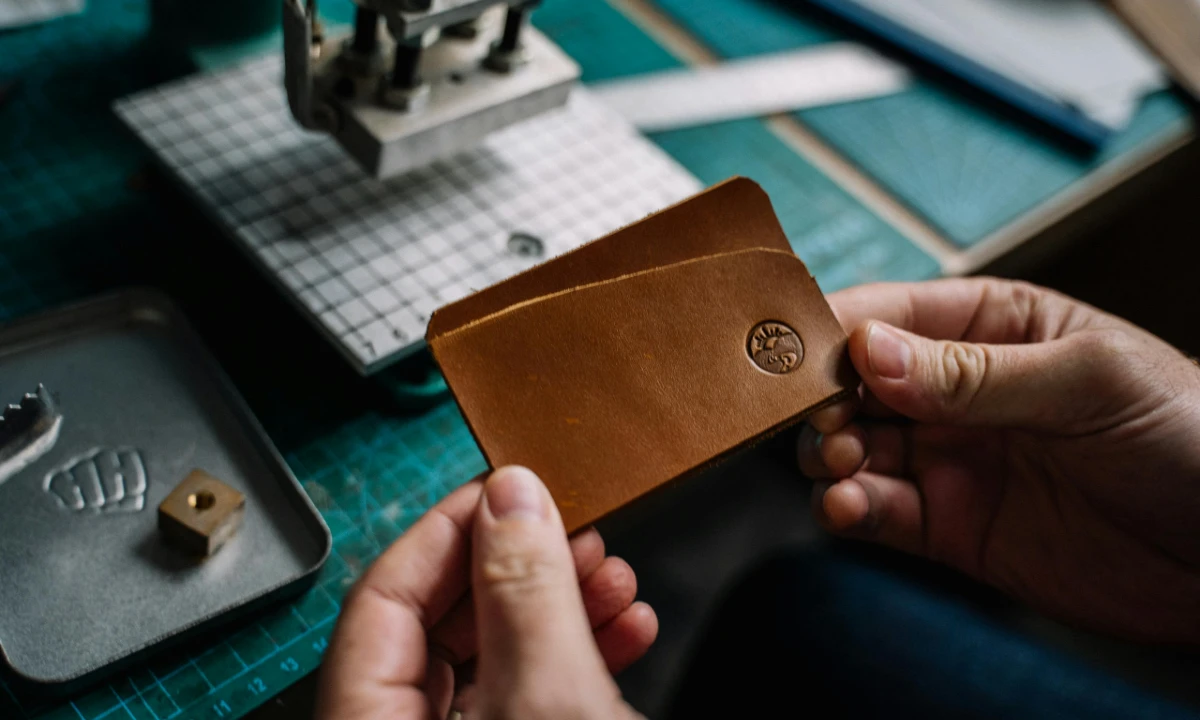
Securing stitches is vital to ensure the durability of your embroidery in leather. For hand embroidery leather, tie off each thread securely at the back of the leather. In machine embroidery on leather, use the machine’s locking stitch feature to secure the ends. Properly secured stitches prevent unraveling and maintain the longevity of your design, which is especially important for items subjected to frequent use, such as a vintage messenger bag.
Incorporating holes or cutouts can add a unique touch to your leather embroidery project. Use a leather punch to carefully create holes where needed. This technique can enhance designs and provide functional elements, such as lacing. Ensure the holes are evenly spaced and aligned with your design. For projects like leather sling bags for ladies, consider how these elements will be used to enhance both the aesthetic and functionality.
Once your embroidery is complete, carefully remove the leather from the hoop. Trim any excess threads and ensure the edges of the leather are clean and neat. This step is crucial to give your embroidery on leather a polished, professional look. Use sharp scissors designed for leather to avoid fraying or uneven cuts. This finishing touch is essential whether you are creating small accessories or larger items.
The final step in how to embroider leather involves adding finishing touches to perfect your project. Apply a leather conditioner to keep the material supple and protect your embroidery. Check for any loose threads and secure them. For a project like a leather sling bag men’s, ensure all components, such as straps and buckles, are securely attached. These finishing touches enhance the overall quality and durability of your leather embroidery, making your handcrafted item truly stand out.
Mastering various stitching techniques is essential for creating intricate leather embroidery designs. Each technique offers unique benefits and can be used to achieve different textures and effects on leather. Whether you’re using machine embroidery on leather or hand embroidery on leather, understanding these stitches will enhance your craftsmanship and elevate your projects.
The running stitch is a basic yet versatile technique used in hand embroidery leather. It involves passing the needle in and out of the leather at regular intervals, creating a dashed line effect. This stitch is ideal for outlining designs or creating simple patterns. To execute a running stitch, ensure your needle and thread are suited for embroidery on leather, and maintain even spacing for a consistent look. This technique works well for both detailed work and larger areas.
The back stitch is a sturdy and precise technique perfect for outlining and detailing in embroidery in leather. To create a back stitch, bring the needle up through the leather, take a small stitch backward, and bring the needle up again one stitch length ahead. This overlapping method provides a solid line, making it ideal for defining shapes and adding intricate details. When using the back stitch for hand embroidery on leather, choose a strong thread to ensure durability.
The satin stitch is used to fill in areas with smooth, solid blocks of color, making it a popular choice in leather embroidery. To perform a satin stitch, bring the needle up at one edge of the shape you want to fill, then bring it down at the opposite edge, repeating this process closely together until the area is filled. This technique requires patience and precision to achieve a uniform appearance. For best results, ensure the tension is consistent to avoid puckering the leather. This technique can be effectively used in both machine embroidery on leather and hand techniques.
French knots add texture and dimension to embroidery on leather. To make a French knot, bring the needle up through the leather, wrap the thread around the needle twice, and then insert the needle back into the leather close to the original exit point. Pull the thread tight to form a small knot. This technique is excellent for adding decorative details, such as flower centers or small accents, enhancing the visual appeal of your hand embroidery on leather projects.
These stitching techniques provide a solid foundation for creating beautiful and durable leather embroidery designs. By mastering these methods, you can explore more complex patterns and elevate your craftsmanship in both machine embroidery on leather and hand techniques.
Leather embroidery combines the timeless elegance of leather with the intricate art of embroidery, creating unique and durable designs. Whether you’re using machine embroidery on leather for precision and efficiency or hand embroidery on leather for a personal touch, mastering the techniques involved can elevate your projects. From selecting the right materials and tools to learning various stitching methods, how to embroider leather is a skill that offers endless creative possibilities. Perfect for crafting custom pieces like leather messenger bags for women or a classic brown leather briefcase, leather embroidery adds a sophisticated touch to your creations.
FAQ
Yes, you can definitely embroider on leather. This technique requires specialized tools and materials to handle the toughness of the leather. Both machine embroidery on leather and hand embroidery on leather are feasible, each offering different advantages. Machine embroidery allows for precise and intricate designs quickly, while hand embroidery offers a personal, handcrafted touch. Proper preparation of the leather and the use of appropriate needles and threads are essential for successful leather embroidery.
Absolutely, you can use embroidery thread on leather. However, it is crucial to choose strong, durable threads that can withstand the toughness of leather. Polyester or rayon threads are often recommended for embroidery in leather projects due to their strength and resilience. When using hand embroidery leather techniques, ensure the thread matches the project’s requirements to avoid breaking or fraying. For machine work, adjust the tension settings to accommodate the thicker material.
Yes, hand embroidery on leather is a popular technique that allows for detailed, personalized designs. This method requires patience and precision, using a strong needle and durable thread. Soft, pliable leather is ideal for hand embroidery as it is easier to work with. Whether creating decorative elements or intricate patterns, hand embroidery adds a unique, artisanal quality to leather items, making each piece truly one-of-a-kind.
For leather embroidery, using the correct needle is essential to avoid damaging the material. A leather needle, also known as a glover’s needle, is specifically designed for this purpose. It has a sharp, triangular point that easily penetrates the leather without tearing it. This type of needle is suitable for both machine embroidery on leather and hand embroidery leather projects, ensuring clean, precise stitches and preventing unnecessary wear on the material.
By mastering these techniques and using the right materials, you can create stunning, durable pieces with leather embroidery, perfect for any project, whether it’s crafting a stylish accessory or adding intricate details to everyday items.

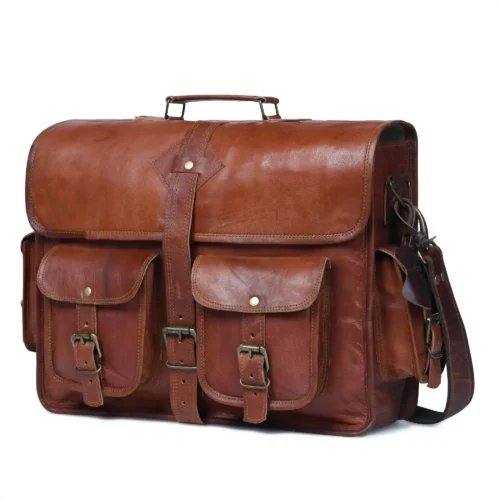
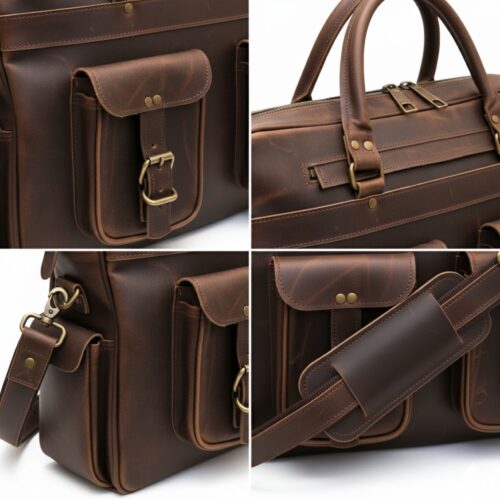
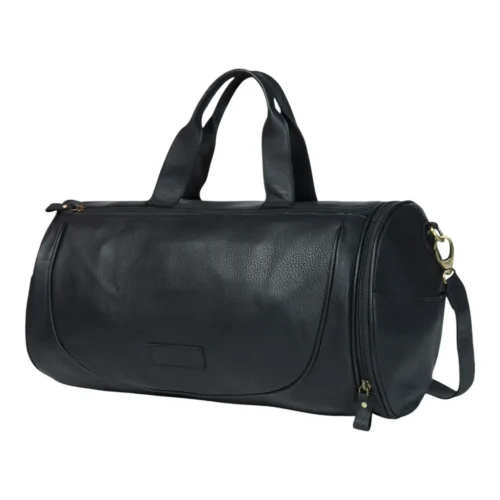
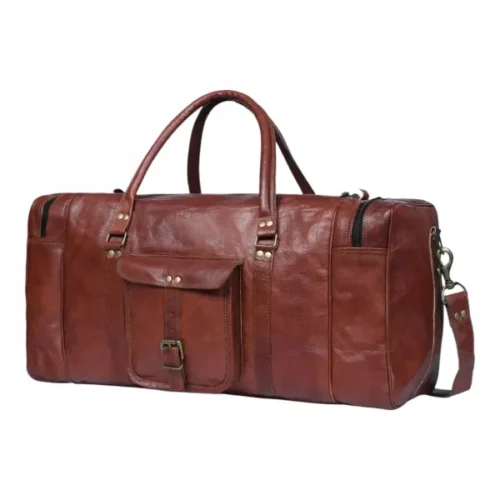
7 in stock
$140.00 – $160.00Price range: $140.00 through $160.00
8 in stock
$150.00 Original price was: $150.00.$69.00Current price is: $69.00.

